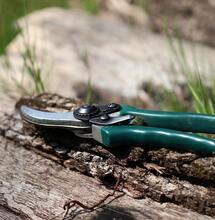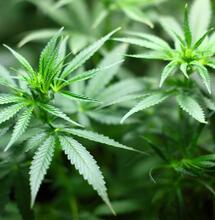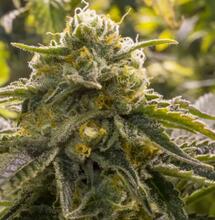How to Grow Orange Haze Cannabis?
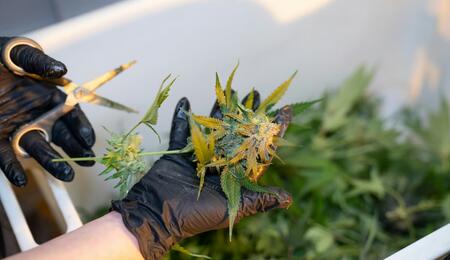
Orange Haze is an energetic sativa-dominant cannabis strain that also offers a rich sensory experience thanks to its genetic makeup. As its name tells, the flavour of this particular haze strain is orange- and citrus-heavy. Two exciting strains borrow their genetics to Orange Haze - classic Haze and Orange Bud. Let’s find out more about this strain, and learn how you can grow Orange Haze cannabis buds at home.
Haze strains comprise some of the most wanted sativa-leaning types of weed. Cannabis users praise haze cultivars for their strong head buzz, which is typically uplifting as much as pensive. In this article, we focus on Orange Haze cannabis. Below you can read more about the strain’s lineage, its effects, and how to cultivate it in your own garden.
Genetic Lineage of Orange Haze Cannabis
The Orange Haze cannabis strain is a sativa-dominant hybrid, pairing Orange Bud and classic Haze as its parent strains. Orange Bud is itself a hybrid, developed by Dutch Passion in the 1980s, and combining Original Skunk and selected Orange Skunk genetics. This parent passes down to Orange Haze its rich citrus flavour as well as the dense, sticky buds lined with copper-like hairs. From the haze line, Orange Haze takes on the all-sativa effects, such as its ability to energize and offer a mental lift, and it can also spark creativity and focus. Orange Haze is created by Green Devil Genetics, and hits around 20% of THC on average.
Terpenes and Flavours
The flavour is orange, citrus, and sweet. The most abundant terpene in Orange Haze is the pine-scented compound pinene, present in herbs such as dill, basil and rosemary. The citrusy aroma is reinforced by the presence of limonene, and there also is a copious amount of myrcene.
Strain Effects
This strain of weed is happy, giggling and uplifting. It can help to unwind stress or combat anxiety, mood swings and depression. It’s medium-strength, which can still feel like too much for some users, thus if you don’t have a great tolerance on THC, go low and go slow with it.
Growing Difficulty
Orange Haze is a plant with medium difficulty to grow. Home cultivators should carefully regulate feeding, and monitor for pests to maintain the health of their beloved orange-flavoured plants. Another challenge during cultivation is dealing with tall plants, therefore it’s advised to plan the grow space before starting the seeds. Knowledge on different cannabis training methods is much welcome so that you can control the plant’s canopy.
Flowering
Orange Haze plants have a 9-week flowering period indoors, or a mid-October harvest when taking care of this cannabis strain outdoors.
Yield
Indoor plants can produce between 400 and 500 grams of weed, while outdoors Orange Haze is more generous and can produce up to 700 grams if it’s cultivated properly.
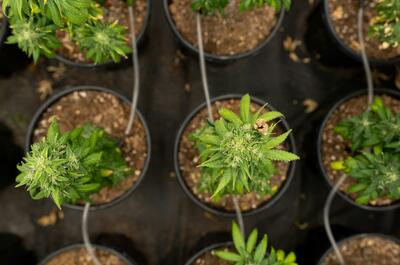
What Is the Optimal Grow Environment for Orange Haze Cannabis?
Planted outdoors, the Orange Haze cannabis strain will flourish in a warm and sunny climate, and will be ready to yield by the second half of October. Indoors Orange Haze plants should be cultivated in the temperature range of 80-68°F (27-20°C) during the day and 70-58°F (21-15°C) at night. Lower the temperatures slightly once flowering is initiated to maintain an optimal environment during this period. For example, daily temperatures can stay in the range of 79-68°F (25-20°C). Maintain a relative humidity of 40-60% during vegetation, and lower to 40-50% when flowering to prevent issues such as bud rot. If you could automate regulating temperature and humidity - that’s a life saver!
Planning Your Grow Space
Like other Haze varieties Orange Haze tends to stretch a lot too, therefore it needs enough space for vertical growth when grown indoors. If you are keeping more than one plant, they need to be spaced out to let in air and prevent showing of mold or pests.
There should be good ventilation and air flow in the cannabis grow room:
- Exhaust fans can help change the air and neutralize odors.
- Oscillating fans can distribute fresh oxygen between plants and stop staling air that could actually cause infestations.
- Carbon dioxide tanks can speed up growth, although they should be used with caution.
How to Set Up the Grow Lights?
When growing Orange Haze weed, full-spectrum LEDs are the ideal solution for lights. With LEDs, you have the option to customize the light spectrum, plus it’s cheaper compared to HID lights.
- Vegetation period: 18/6 light cycle is recommended to promote healthy plant growth. For the vegetative stage of Orange Haze (and growing weed in general), adjust a blue light rich spectrum (between 400-500nm), which will promote compact, bushy growth.
- Flowering period: switching to a 12/12 light cycle will instigate flowering. Use a full-spectrum red-heavy light (between 600-750nm) to promote bud formation and bolster resin and cannabinoid production.
Keep a distance of around 18 to 24 inches between the grow lights and the canopy of the cannabis plants. Indoor grow rooms can be additionally packed with reflective materials to facilitate a better distribution of light.
How to Train and Feed Orange Haze Plants?
Besides regular pruning, Orange Haze can benefit from few other training techniques to control its canopy and help increase buds output.
- Low-stress training (LST) or softly bending and tying down the branches will allow access of light and air to the lower areas of the plant.
- Topping or fimming can stimulate the growth of a bushier canopy and more bud sites.
- Pruning will ensure that cannabis plants stay healthy throughout all stages of growth. Removing growth on the lower parts of the plant will divert energy to the upper branches and colas.
- Defoliation can additionally help improve light and airflow around the bud sites.
As is the usual practice when growing cannabis, supplement Orange Haze plants with enough nitrogen-rich formula during the vegetative stage. Substitute with solutions higher on phosphorus and potassium once flowering is triggered. Bloom boosters can also be added for Orange Haze.
Whichever nutrient products you choose, just follow the recommended dosage and feeding schedule as provided by the manufacturer. Gradually increase on each nutrient solution as you advance through the different cycles of growth, and closely monitor plants how they react to the feeds. Signs if something is wrong with the nutrient uptake will first show on the leaves. Burnt tip leaves, yellowing, browning or curling might indicate overfeeding.
As the time for harvest approaches, stop feeding your Orange Haze plants and flush out the soil (this should be done 1 or 2 weeks prior to harvesting). Stop all nutrients and only give filtered water to the crops. For coco or hydro, do this 3-7 days before the harvest. Flushing is a necessary step, especially with scent-rich cultivars. It will make sure that your orange-flavoured plants maintain their unique aroma and that the final product makes for a smooth smoke.
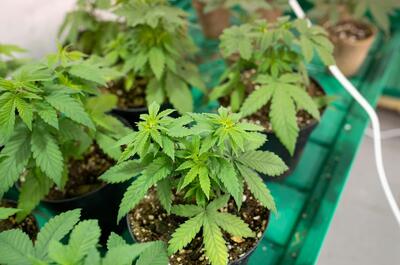
Frequently Asked Questions About Orange Haze Cannabis
Here’s everything else you need to know about growing Orange Haze marijuana.
Q: When do you know Orange Haze is ready for harvest?
A: Follow the good ol’ pistils rule. When 70-90% of pistils are darkened and curled in, it means that the buds are ripe to collect them. It’s also good to check the trichomes. Under a magnifying glass, they should appear as milky-white mixed with amber. Seeing translucent trichomes means that plants are not ready for harvest yet. Abundance of amber indicates that plants are past their prime time and you’ll get more downer weed.
Q: How to dry and cure Orange Haze?
A: Orange Haze plant material should be hung for drying in a dark room with temperatures around 65°F (18°C) and humidity levels at 45-50%. As long as the stems are still bendable, it’s not properly dry. It needs to snap when you try to break it, and this can take up to 2 weeks. For curing, use airtight containers, open several times a day to let in fresh air, keep in a cupboard, and roll the first joint in 4-week time to finally taste the result of your grow operation.
Q: How strong is Orange Haze and should you be careful?
A: Orange Haze is considered to be a strain with moderate-to-high potency and strength. Which can be too much for some users. It would also depend on the delivery method. Vaping and edibles can be far more powerful in delivering high amounts of THC compared to smoking where you have greater control over how much you consume. It’s all up to you.
Q: Which cannabis strains are similar to Orange Haze?
A: If you cannot find Orange Haze near you, and you are still eager to try something similar, look for Grapefruit Haze, Super Lemon Haze, Pineapple Express or Sweet ZZ (grape, citrus). All of these strains can boost energy and trigger introspection in a similar fashion as Orange Haze (except Sweet ZZ that is more of a downer), and they all have rich smell which will additionally stimulate your mind and your body.
Happy growing!
More grow guides from Soft Secrets:
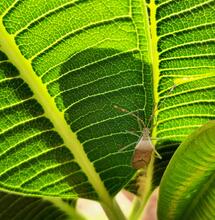


.png)

